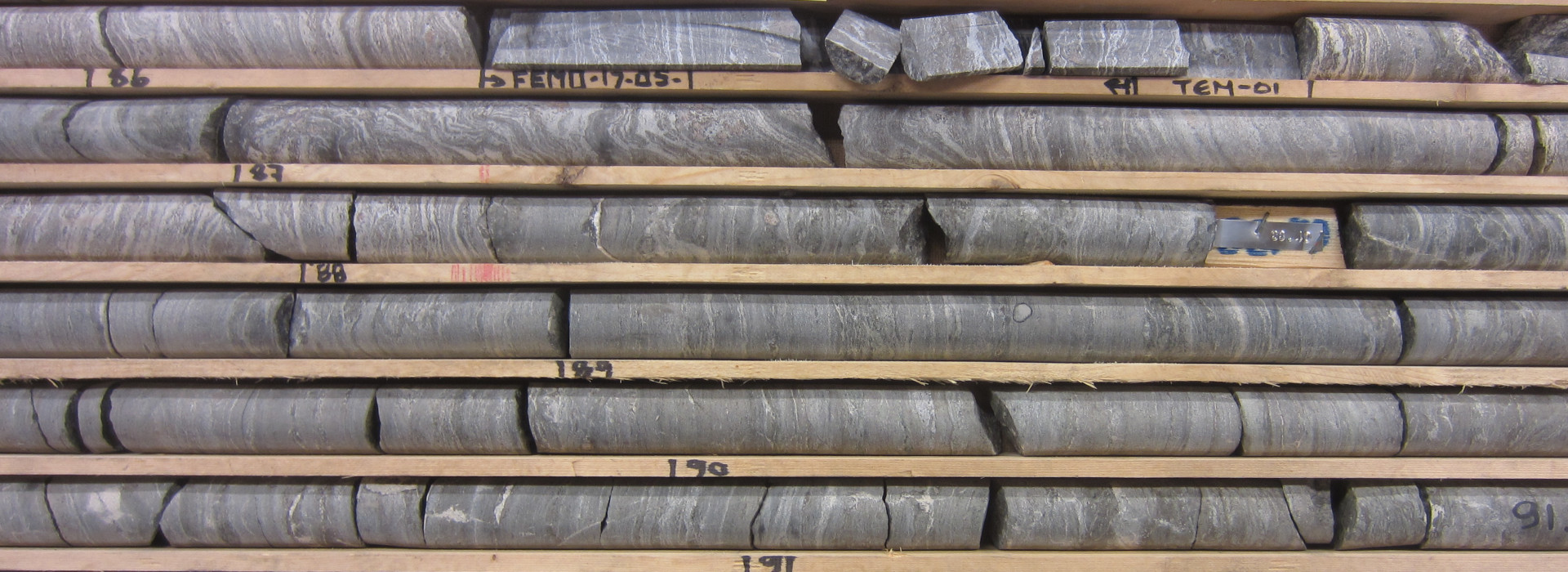Themen
- Metal behaviour during metamorphism and the formation of quartz-carbonate veins, Rinkian Orogen, central West Greenland
Orogenic gold deposits are characterized by shear zone-hosted quartz-carbonate vein systems in orogens. The Paleoproterozoic Rinkian Orogen hosts quartz-carbonate veins in meta-sedimentary schist. Although, they formed in a characteristic setting for orogenic gold deposits and there is hydrothermal alteration associated with the veins, gold contents are low. The aim of this project is to characterize the hydrothermal alteration associated with the veins geochemically and petrologically and to compare the data with typical orogenic gold deposits in order to better understand the hydrothermal processes. The project involves application of petrological and geochemical methods.
- Hydrothermal quartz vein formation in Archean rocks of central West Greenland
A small Archean greenstone belt in central West Greenland hosts hydrothermal mineralization in a quartz vein and a strongly silicified zone. The style of mineralization is unclear and gold analysis has not been done. The aim of this project is to characterize the hydrothermal mineralization by petrological and geochemical approaches. It is possible that the mineralized and altered zone represents an Archean orogenic gold deposit.
- Hydrothermal alteration of paragneiss in the high-grade metamorphic terrane of the northern Rinkian Orogen, central West Greenland
The northern part of the Rinkian Orogen is characterized by gneiss and migmatite. Presumably meta-sedimentary gneisses show interesting different grey and rusty weathering colours, although they macroscopically have the same mineral composition. The rusty weathering of the paragneiss has confused geologists in surficial mineral exploration for some time. The aim of this project is to characterize the samples using geochemistry and petrology in order to determine how the different weathering colouration is controlled and whether the rusty colour is caused by weathering of hydrothermal alteration. A better understanding of the processes behind the colour variation may aid in regional mineral exploration.
- Trace element enrichement in Au-only and atypical orogenic Au deposits of the Pohjanmaa belt, Finland
Orogenic Au deposits in Finland are classified as Au-only or as atypical Au-Cu-Co. The Pohjanmaa belt in South Western Finland hosts both Au-only and atypical orogenic Au deposits and is ideal place to study the key parameters leading to one or the other style of mineralization. This study focuses on four deposits: Laivakangas, Jouhineva, Huhta and Kurula. The deposits share many similarities and are characterised by two major Au mineralization stages: a peak metamorphism Au-As-Co mineralization stage and a later Au-Cu one. Each stage is characterised by different ore mineralogy such as arsenopyrite, loellingite, clinosaflorite, pyrrhotite, chalcopyrite, pyrite. The aim of the project is to carry in-situ LA-ICP-MS analysis of sulfides from the different deposits to better understand the mechanisms for base metal enrichment in atypical orogenic Au deposits.
- Orogenic gold deposits in the Central Lapland Greenstone Belt: Characterization of mineralizing processes leading to the formation of typical and atypical orogenic deposits
Orogenic Au deposits are the product of complex large scale processes which include the production of metal-rich fluids, the transport of these metal-rich fluids through the Earth’s crust, and the precipitation of the metals in structurally controlled locations at various degree of metamorphism. The Paleoproterozoic Central Lapland Greenstone Belt (CLGB) hosts numerous orogenic Au deposits. These deposits, however, show various metal endowment from Au-only to Au-Cu-Co-U and this variability is not well constrained. A hypothesis we want to test is the control of lithology variation in the source area on the metal budget of the hydrothermal fluids and finally on the metal endowment of the deposit.
- Is there gold in “Diamanten Sperrgebiet” quartz veins?
Methods: Microscopy (Transmitted light, reflected light, Cl), REM, XRD, ICPOES, ICPMS
